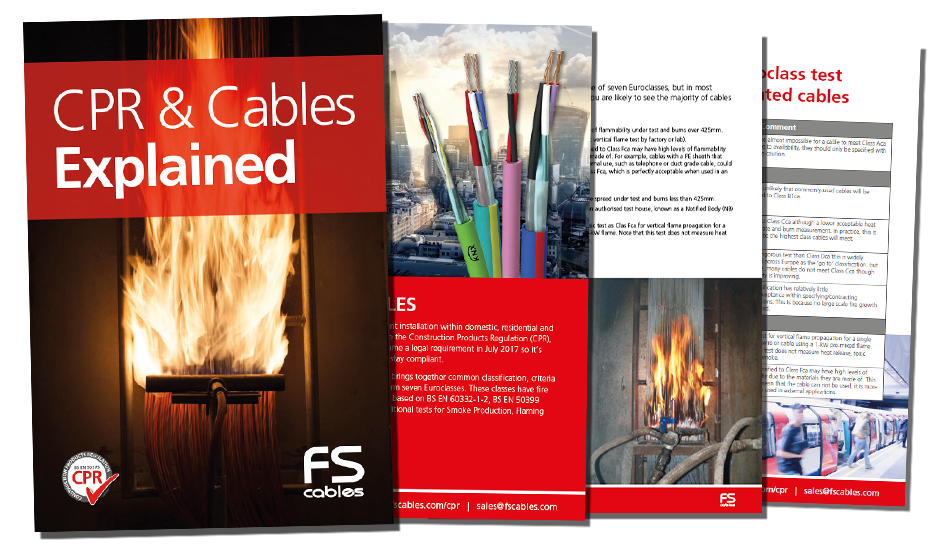Posted 27 April 2022
Trying to understand the CPR for cables can feel like you’re going round in circles whilst navigating a complex maze, specifiers and installers have our sympathies.
There’s little doubt that the CPR’s contribution to fire safety is ultimately a positive one. But often, the way in which it has been implemented and interpreted has simply served to spread confusion and a lack of understanding.
The 18th edition of BS 7671 recognises that where applicable, cables need to meet CPR requirements and carry a Euroclass for fire performance. BS 7671 does not however specify or recommend which Euroclass to use in a particular environment or application. Nor does it outlaw using cables that emit toxic fumes and smoke in the event of fire. Lower CPR classes focus on spread of fire, not toxic fume and smoke emissions. Specifiers considering the emissions of cables when burnt need to choose Low Smoke Halogen Free (LSHF) but beware.
A cable may meet Class Eca in CPR terms but this gives no indication of its toxicity. Stay cautious of 'LSF' cables as the term carries little meaning and often describes PVC-based products. Watch our burn test video below and see for yourself!
Burn test at 2:10.

As part of our commitment to help customers meet current regulations, FS Cables stock over 950 CPR-compliant cables, many with LSHF options, including Alternative to Belden, structured wiring, fibre, coax, signal & control and power cables. You can see the range here.
Interpreting the CPR classes and applying them to cable specification in the real world is challenging, so we have updated our CPR guide which you can download here. And if you prefer, you can watch our video series, which breaks the significant issues into bite size videos.
While we cannot recommend courses of action, we can offer guidance, clarity and options to help demystify CPR compliant cable specification. If you need any help, speak to one of technical sales team on 01727 840841.






